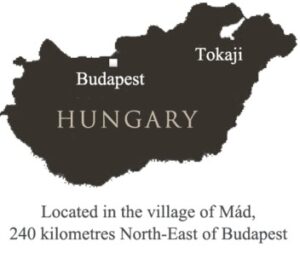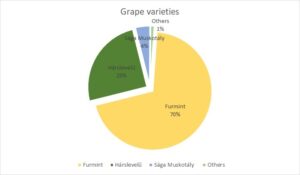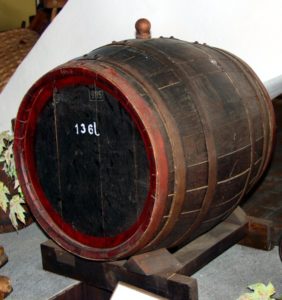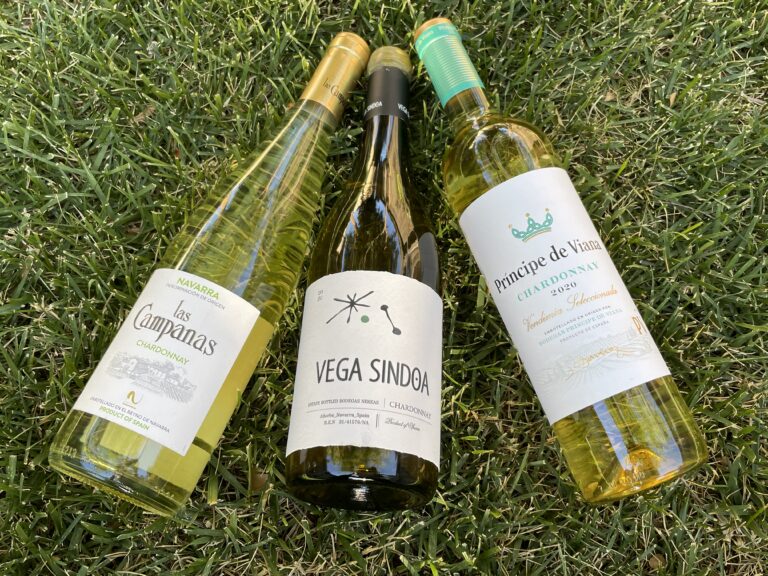*This is part three of the series about Hungary and its wine. In part one, I talked about how visiting Budapest and learning about its history truly affected me. I saw images of what the people had to deal with and heard first hand accounts of how property was taken and people were murdered. To know that these occurrences happened in the not so distant past was astounding to me. The second post focused on my visit to Villány, where I was a guest of the Franc and Franc International Conference. I was there to discuss Cabernet Franc in California and was treated to visiting several of the region’s wineries.
Wine or Region?
 Tokaj (Tok-eye) is actually a region located in the north-eastern region of Hungary. Not just any region, but the oldest classified wine region in Europe. Mt. Tokaj is the very prominent volcanic cone located in the southern region of took a includes the foothills of the Zempelén Mountains. Tokaj is often used to recognize the entire region however the people living there refer to themselves as being from Hegyalja, to recognize that they are from the region and not from the town itself. Although calling the wine Tokaj is accepted, it is more appropriate to call the wine “Tokaji” where the use of the “i” represents the place of origin.
Tokaj (Tok-eye) is actually a region located in the north-eastern region of Hungary. Not just any region, but the oldest classified wine region in Europe. Mt. Tokaj is the very prominent volcanic cone located in the southern region of took a includes the foothills of the Zempelén Mountains. Tokaj is often used to recognize the entire region however the people living there refer to themselves as being from Hegyalja, to recognize that they are from the region and not from the town itself. Although calling the wine Tokaj is accepted, it is more appropriate to call the wine “Tokaji” where the use of the “i” represents the place of origin.
Due to the Zempelén mountains, Tokaj experiences a cool climate with a mean temperature of 48-50oF, but reaches temperatures of 26oF in January and 70oF in the summer. The high humidity resulting from the union of the Tisza and Bodrog rivers in the region provides for the perfect environment for the all-important Botrytis that makes the world-renowned wines of the region.
The soil of the region is composed of a variety of different volcanic rocks including rhyolite, rhyodacite, dacite and basalt covered by mostly clay. Tuffs, also found in the region, occur when ash is ejected from a volcano, settles and accumulates over time becoming hard. They can vary in composition and color, but all contain essential nutrients for vines. Dense plantings (up to 4000/acre) are found between 500 and 100o feet altitude.
After the communistic rule ended The Royal Tokaji Wine Company, established in 1990, has been one of the leaders of Hungary’s post-Communist enological revival. Hugh Johnson, wine author and historian, founded the company with the goal to bring back international acclaim to the Tokaj region and remind the world of wines that “would make angels sing out loud in praise.”
Tokaj’s Grapes

Despite the fact that there are six wine grape varieties permitted to be labeled Tokaji, the majority of the wines are produced using three. Furmint, Hárslevelű and Muscat de Lunel. These grapes are indigenous to Tokaj and genetic mapping has shown they are related. These grape varieties tend to produce the dry age-worthy white wines rather than the sweet ones also known in the region.
Furmint accounts for approximately 70% of all current plantings. Tokaj, which was once known as “The wine of kings,” can be traced back to the early 18th century, however the UNESCO World Heritage Site, recognized Tokaji-Hegyalja of northeastern Hungary and southeastern Slovakia as an established wine region hundreds of years before then.
According to grape geneticist Carole Meredith: ‘Furmint is either a parent or offspring of Gouais blanc. There is not yet any definitive genetic evidence to prove which is the parent, but historic references to Gouais are older so it is more likely that Gouais is the parent of Furmint and not the other way around.’
There is a rumor that it is thought that King Béla IV brought Furmint to Hungary in the 13th century. It is known for sure that Furmint has been in Tokaj since 1571, but once again, DNA evidence shows that Furmint did originate in Tokaj. Similar to other European countries, Hungary was effected by the phylloxera epidemic in the late 19th century. The region was just beginning to recover, when the two world wars, and the civil strife made it almost impossible to rejuvenate the wine making business. Add on the subsequent Communist period when wine was controlled by the state and it was quantity over quality, the region has had a lot to recover from.
Hárslevelű, which translated to “linden leaf,” accounts for about 25% of the vines. Less susceptible to botrytis it produces an extremely aromatic wine with a spicy character. Although found as a single varietal, it is often blended with its parent furmint to provide the aromatics in the dessert wines.
Muscat de Lunel represents the last 5% of the grapes grown and used for the dry and off-dry wines as well as being used in Aszú and late harvest. Also known simply as Lunel, or Muscat Blanc a Petits grains or Sága Muskotály is a finicky grape to grow, but extremely important to the “seasoning” of the wine.
Dry, Semi-Dry or Sweet?
Whatever your heart desires, Tokaj has the answer. There are several winemaking styles allowed to bear the Tokaj label.
Száraz
These wines are getting the largest push in social media and the most likely to be seen in the US market in terms of by-the-glass offerings. Dry Tokaji has been being made for centuries but over time became less popular than the sweet wines. There are three major tiers: Birtok (estate), village (as in Burgundy), and single vineyard. With RS typically around 6 to 15 grams/liter, and high acidity, these wines pair exceptionally well with food.
Pezsgő (Sparkling)
Hungarian sparkling wine produced in the traditional method dates to 1882 in Törley, but it didn’t reach Tokaj until 2006 or 2007. As with the dry wines of the region, it faces the problem of marketing since it is sweet wines, not bubbles that the Tokaj is known for. Plus since both Furmint and Hárslevelű, are relatively late ripening and prone to botrytis, they are not exactly what a crisp sparkling wine is made from.
Késői Szüretelésű (Late Harvest)
Tokaj’s late harvest became a category in the 1990s. Unlike Aszú and Szamorodni, it is not strictly regulated. The wines are made from over-ripened grapes, but does not require botrytis and can be fermented and aged in stainless steel for whatever amount of time the producer dictates, with no minimum for alcohol or residual sugar.
Édes (Sweet) & Száraz (Dry) Szamorodni
Originally called Főbor, this style, is made when healthy, shriveled, and botrytized grapes are harvested and co-fermented. Unlike with Aszú, there is no individual botrytized berry selection. Szamorodni literally means “as it comes” and can be either sweet or dry. Sweet Szamorodni is required to spend at least two years in barrel and have at least 12% alcohol. With more botrytized character and integrated oxidative flavors, it produces a more complex wine than late harvest wine. Dry Szamorodni is a much rarer style. While being fermented to dryness, it introduces Cladosporium cellare (a special cellar mold), and in some cases, a yeast flor develops over the top of the wine.
Aszú
 Claiming the title of the world’s first and most concentrated (in terms of acidity and sugar) botrytized wine, Aszú is the classic sweet wine of Tokaj. You can expect a sweet, low in alcohol, oxidative (not oxidized), and balanced wine. These wines are made by hand picking single botrytized berries that were placed into a puttony, a small wooden basket that could carry about 25 kilograms. Once the puttony is full, berries are mashed and then macerated with either a fermenting must or an already fermented base wine. After pressing, the wine is placed into Gönci, (special 136-liter barrels of Hungarian oak.) Aszú wines require a minimum aging of 18 months in barrel and a year in bottle. Aszú wines were originally allowed to be chaptalized, but with initiative to increase quality, it was banned in 1991.
Claiming the title of the world’s first and most concentrated (in terms of acidity and sugar) botrytized wine, Aszú is the classic sweet wine of Tokaj. You can expect a sweet, low in alcohol, oxidative (not oxidized), and balanced wine. These wines are made by hand picking single botrytized berries that were placed into a puttony, a small wooden basket that could carry about 25 kilograms. Once the puttony is full, berries are mashed and then macerated with either a fermenting must or an already fermented base wine. After pressing, the wine is placed into Gönci, (special 136-liter barrels of Hungarian oak.) Aszú wines require a minimum aging of 18 months in barrel and a year in bottle. Aszú wines were originally allowed to be chaptalized, but with initiative to increase quality, it was banned in 1991.
Fordítás & Máslás
Fordítás means “turning over.” This category of wine, dating back to the 1820s, is made by refermenting wine or must when it is poured over Aszú paste (marc) left after pressing and aged for a minimum of one year in barrel and one more in bottle to get every last bit of botrytized flavor out into the wine. These wines are more rustic than elegant.
Máslás which means “copying” is an ideal term since the new wine is refermented on Aszú lees. Think of it as a copy-paste method of wine making that actually has a history back to 1759. No longer an official category this sweet wine typically has 50-90g/ of sugar.
Essencia
The free run juice of hand-picked botrytized berries can have an RS of 450g/l (there have been situations documented of 800g/l) and 20 grams/liter total acidity before fermentation. With its sugar concentration, it can take years to reach single digit alcohol levels. It is extremely viscous and thereby is often served with a spoon but is rarely sold commercially. Instead, it is more often used in blending to improve the concentration of Aszú wines.
Looking for more? Join us on Winephabet Street for Furmint.
Click to Download
~Sláinte!
